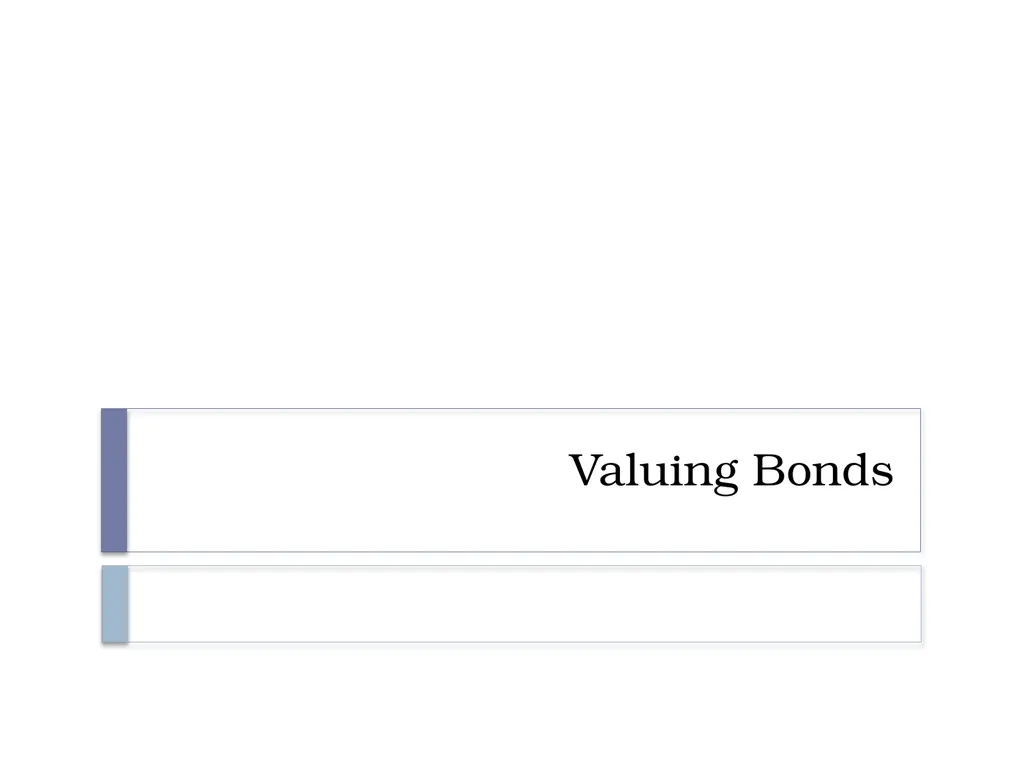
Author : cheryl-pisano | Published Date : 2025-05-16
Description: Valuing Bonds Bond Cash Flows, Prices, and Yields Bond Terminology Face Value Notional amount used to compute the interest payments Coupon Rate Determines the amount of each coupon payment, expressed as an annual percentage rate CouponDownload Presentation The PPT/PDF document "" is the property of its rightful owner. Permission is granted to download and print the materials on this website for personal, non-commercial use only, and to display it on your personal computer provided you do not modify the materials and that you retain all copyright notices contained in the materials. By downloading content from our website, you accept the terms of this agreement.
Here is the link to download the presentation.
"Valuing Bonds Bond Cash Flows, Prices, and Yields"The content belongs to its owner. You may download and print it for personal use, without modification, and keep all copyright notices. By downloading, you agree to these terms.













